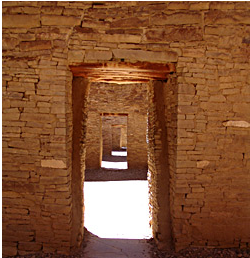Publication Date
7-1-2013
Abstract
Archaeologists have long studied hunting strategies and weapons technology of the Paleoindian period of North America, dating to the close of the Pleistocene more than 10,000 years ago. Less well understood are womens activities, the toolkits they used, and how gendered activities can be recognized in the archaeological record. I use a number of lines of inquiry, including ethnographic review, cross-cultural analysis, and archaeological investigation, to address these questions. Because the Paleoindian record consists largely of flaked stone, investigating gendered activities is challenging, particularly if women did not use stone tools to any great extent. Examination of the historic and ethnographic literature reveals women's participation in all aspects of technological organization, including quarrying, transport, manufacture, use, and maintenance. Especially prominent among women's toolkits are stone hide-working tools. Similar tools, called endscrapers, occur in the Paleoindian record, suggesting that these may have been used by women. To further examine the possibility of women's contributions to the Paleoindian record, I conducted cross-cultural analyses, which indicate that high reliance on hunting and increasing latitude results in a division of labor in which women do the vast majority of the hide processing. Employing embodied capital theory (Kaplan et al. 2000), I argue that tasks requiring both in-depth knowledge and complex perceptual motor skills, such as hide-working, take many years to master and are often divided along gender lines beginning in early childhood. Finally, I use the Rio Rancho Folsom site in the Central Rio Grande Valley of New Mexico as a case study to investigate Paleoindian gendered activities. Spatial distribution of Folsom-age endscrapers and weaponry from the Rio Rancho Folsom site indicate that endscrapers and weapons debris were distributed differently, though they also overlapped to a degree. The spatial distributions of weapons and endscrapers suggest that most endscrapers were not associated with weapons production. Raw material allocation for weapons and endscrapers differs to some degree, but there are overall similarities in the makeup of these assemblages in terms of local and non-local materials. The allocation of raw material to endscrapers does not appear to have been expedient, but rather planned for in anticipation of use at the site. Further, the production of endscrapers does not appear to have been a byproduct of weapons production, but rather a separate strategy to produce a particular form. Overall, multiple lines of evidence are suggestive of women's hide-working in the Paleoindian record, and point to the possibility of endscrapers as a component of women's hide-working toolkits.'
Keywords
Paleoindian gender scraper endscraper hide hidework technological organization
Project Sponsors
The Senior Hibben Fellowship from the Hibben Foundation, the Kennedy Award from the University of New Mexico Anthropology Department, and the Ana Castillo Best Paper Award from the Feminist Research Institute at the University of New Mexico
Document Type
Dissertation
Language
English
Degree Name
Anthropology
Level of Degree
Doctoral
Department Name
Anthropology
First Committee Member (Chair)
Bruce B. Huckell
Second Committee Member
Lawrence Straus
Third Committee Member
E. James Dixon
Fourth Committee Member
Joe E. Watkins
Recommended Citation
Ruth, Susan M.. "Women's Toolkits: Engendering Paleoindian Technological Organization." (2013). https://digitalrepository.unm.edu/anth_etds/58

